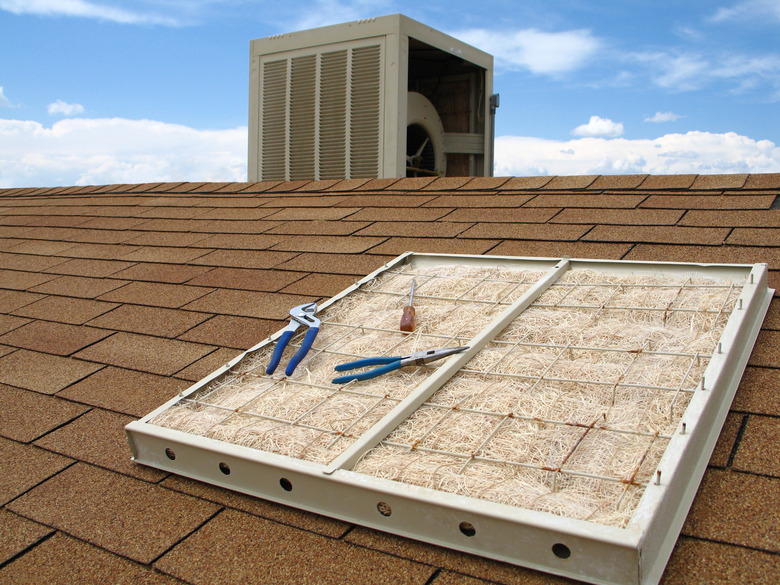Proper Ducting For Swamp Coolers
We may receive a commission on purchases made from links.
Swamp coolers, also known as evaporative coolers, are used in hot, dry climates to cool homes and businesses. Whether installed on the roof or through the wall, swamp coolers need ducting to move the cool air from the unit into the home. Proper ducting for swamp coolers uses rigid ducts that are 18 x 18 or 20 x 20 inches wide to accommodate the high flow of moist air.
About Swamp Coolers
About Swamp Coolers
Swamp coolers are an eco-friendly cooling method, as the primary components are a pump, a fan, and a 1/4-inch water line. While a swamp cooler definitely cools the air, it doesn't produce freezing-cold air like an air conditioner. It works best in dry climates, as it adds water to the moving air to cool the home. In humid climates, it adds more moisture to already water-laden air, which is not helpful in cooling the house.
A swamp cooler works by pumping water from its reservoir to the top of the unit where the water trickles over fiber pads. The fan pulls the hot air from outside the unit through the wet pads and pushes the now cooled moisture-laden air into the home. Window-mount swamp coolers don't need ducting, but if you're using a large unit to cool the entire house, it needs ducting to direct the cool air into a central location or individual rooms.
Roof vs. Wall-Mounted Units
Roof vs. Wall-Mounted Units
Roof-mounted swamp coolers use a downdraft installation. The ductwork is attached to the bottom of the swamp cooler, and the fan blows the cool air downward. Roof trusses are usually measured at 24 inches on center, leaving approximately 21 inches between the trusses for the ducting.
If you are installing a roof unit, avoid placing it on the peak or in a valley, as it makes it hard to seal around the unit to prevent roof leaks. In addition, never cut into roof or ceiling trusses because this weakens the roof and structural integrity of your home.
Wall-mounted units may be installed on the upper back side of your home. Be sure that the brackets and unit are secured to wall studs, as it is heavy when the reservoir and pads are filled with water. The fan blows air horizontally into the ducting, which then drops into the rooms from ceiling diffusers.
Swamp Cooler Ducting
Swamp Cooler Ducting
The simplest installation is when the swamp cooler ducting is attached to the unit and drops down to a ceiling diffuser in a central hall. Open the doors leading into the rooms to be cooled and open a window in each room to pull the cool air inside. Add a window fan blowing outward to increase the draw of cooler air into the room.
If the cool air is being directed by ducting into separate rooms, use a "Y" fitting rather than a "T" where the ducting divides so the airflow is not impeded by sharp corners. Alternatively, if space is tight, some swamp cooler installations have a box or plenum inside the attic with attached ducting leading to two or more outlets. While not as efficient as rigid ducting, insulated flexible ducting is also an option. The recommended sizes for flexible ducting are 18 inches for units producing 4,500 cubic feet per minute (cfm) airflow, 20 inches for 5,500 cfm, and 24 inches for 6,500 cfm.
Maintenance of Swamp Coolers
Maintenance of Swamp Coolers
Swamp coolers need maintenance before and after the cooling season. In general, before using the unit for the first time in summer, check the pads and replace them if they are clogged with debris or mineral deposits. Clean the reservoir and seal it if necessary before turning on the water and adjusting the float valve so the water remains 1 inch below the edge of the reservoir. Oil the fan motor and adjust the belt so it has no more than 1 inch of flex.
In fall, add a cup of vinegar to the reservoir and let it circulate through the system for an hour to dissolve mineral deposits before draining the unit for winter. Clean out any debris and turn off the water. Disconnect the power and cover the swamp cooler with a cover. Inside the house, close the dampers on the ceiling grilles to keep the warm air inside and cold winter air outside.
